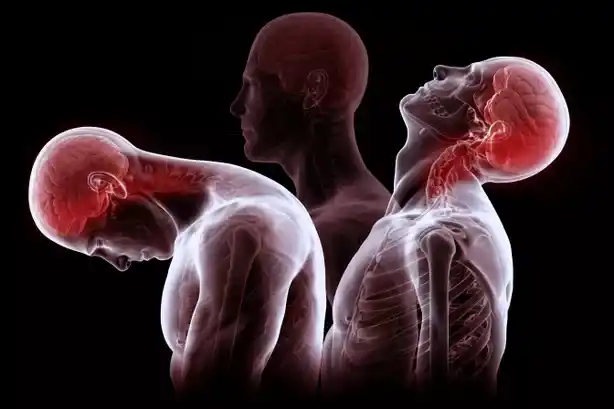Another name for whiplash is Cervical Acceleration-Deceleration Injury. It can occur in any situation where someone is hit by a sudden force from behind – whether from a car accident, slip and fall, or sports injury like a football tackle.
In all situations, the head’s first motion is up. This is called the ramping effect and is due to the spine pushing against the seat (in a car accident) and flattening the spinal curve. This upward motion makes it easier for the neck-head to extend backwards, past its normal limits – especially if headrests or helmet pads are not properly positioned – possibly tearing ligaments and herniating discs in the process.

Once motion from the impact stops, the head then “whips” forward. However, the brain is still going backwards, due to the fluid area in the back of the brain, and the brain hits the back of the skull. This can cause bleeding in the brain or hematoma and result in a concussion.
The neck-head then goes past its normal forward limits, creating another opportunity to tear ligaments and herniate discs, then “whips” back once more, with the brain hitting the front of the skull. The whiplash mechanism, which is often taken lightly, frequently causes serious injuries, such as herniations, bleeding and tissue tears, that can create permanent, chronic conditions.
If you have been rear-ended in a car accident, it is strongly recommended you seek immediate medical care with a facility, such as Health Quest, where providers are trained to identify and treat any possible underlying injuries. The sooner you address them, the more you can minimize their long-term impact.

